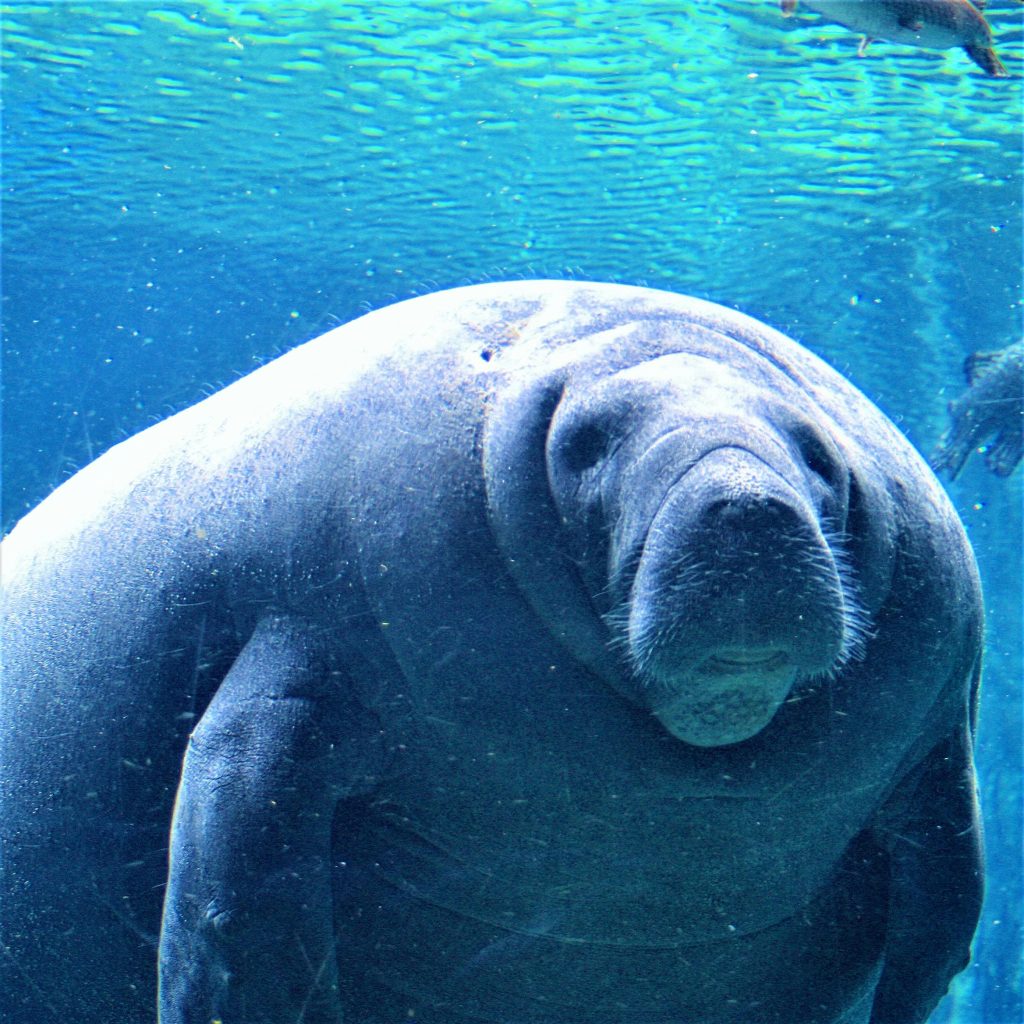Have you ever seen a manatee smile?
These gentle, slow-moving giants of the sea have a way of making people stop and stare, not just because they look like giant, wrinkly potatoes, but because there’s something oddly peaceful about them.
They float through life, munching on seagrass, completely unaware of how much trouble they’re actually in.
That’s why Manatee Appreciation Day (celebrated every last Wednesday of March) exists, not just to go “Aww, cute!” at photos, but to remind us that these animals need our help.
Boat strikes, pollution, and vanishing habitats are pushing them closer to danger, and if we don’t pay attention, we could lose them for good.
So let’s talk about why manatees matter, what’s threatening them, and, most importantly, how you can make a difference.
The Origins of Manatee Appreciation Day
Manatee Appreciation Day wasn’t just created out of thin air, it has a real purpose.
The holiday was established by the Save the Manatee Club, a nonprofit co-founded by singer Jimmy Buffett and former Florida Governor Bob Graham in 1981.
Their goal is to raise awareness about manatee conservation and push for stronger protections.
And why the last wednesday of March?
March is a crucial month for manatees. In Florida (where most West Indian manatees live), winter is ending, and manatees begin migrating back to warmer waters.
It’s the perfect time to spot them in the wild and remind people why they need our help.
Over the years, Manatee Appreciation Day has helped:
- Spread awareness about manatee endangerment.
- Push for boat speed regulations in manatee habitats.
- Fund rescue and rehabilitation programs.
So, while it’s fun to celebrate, there’s a deeper mission: keeping manatees safe for future generations.
Biology and Behavior of Manatees
There are three species of manatees:
- West Indian Manatee – Found in Florida, the Caribbean, and the Gulf of Mexico.
- Amazonian Manatee – Lives in freshwater rivers in the Amazon Basin.
- West African Manatee – Roams the coasts and rivers of West Africa.
(There’s also the Dugong, a close cousin, but it’s a different species.)
What Makes Manatees So Unique?
Manatees are:
- Herbivores – They eat up to 10% of their body weight in seagrass daily.
- Slow Movers – They swim at about 5 mph (hence the nickname “sea cows”).
- No Natural Predators – Their biggest threats are humans and cold water.
- Social but Not Too Social – They’re generally solitary but sometimes hang out in small groups.
| 💡Fun Fact: Manatees and Elephants Are Related!
Yep, they share a common ancestor from millions of years ago. You can see the resemblance in their thick, wrinkled skin and prehensile (gripping) upper lips! |
Ecological Importance of Manatees
Manatees play a vital role in their ecosystems.
1. The “Lawnmowers of the Sea”:
Through grazing constantly on seagrass, manatees:
- Prevent seagrass overgrowth, which can choke marine life.
- Help maintain clean, healthy waterways.
2. Indicator Species:
If manatees are struggling, it’s a sign that their habitat is in trouble.
Pollution, boat traffic, and algae blooms (caused by fertilizer runoff) all hurt them and eventually, us.
Threats Facing Manatees
Manatees may be tough, but they’re no match for:
1. Boat Strikes:
Manatees swim slowly and often surface for air, making them easy targets for boat propellers.
Many have distinct scars from past collisions.
2. Habitat Loss:
Coastal development destroys seagrass beds and warm-water springs they rely on.
Pollution leads to toxic algae blooms, killing their food sources.
3. Cold Stress:
Manatees can’t survive in water below 68°F (20°C).
Without warm refuges (like natural springs or power plant outflows), they freeze to death.
Are Manatees Still Endangered?
Yes and no.
The West Indian manatee was downlisted to “Threatened” in 2017, but recent die-offs (like the 2021 mass starvation event in Florida) show they’re still at risk.
How to Celebrate Manatee Appreciation Day
Now, the fun part – how can YOU make a difference?
You can help by:
- Supporting Conservation Groups – Donate to Save the Manatee Club or WWF.
- Boating Responsibly – Follow slow-speed zones in manatee areas.
- Reducing Pollution – Use less fertilizer (it causes algae blooms) and avoid plastic waste.
Other fun activities you can engage in include:
- Visiting a Manatee Sanctuary – Crystal River, FL, is a top spot.
- Watching Live Manatee Cams – Check out Explore.org’s manatee cam.
Do Laws Protecting Manatees Work?
Manatees have legal shields but are they enough?
Some key protections include:
- Endangered Species Act (ESA) – Makes harming manatees illegal.
- Marine Mammal Protection Act – Bans harassment.
- Florida’s Boat Speed Zones – Slow areas reduce collisions.
The problem is that enforcement is spotty. Many boaters ignore speed limits, and habitat destruction continues.
In Conclusion
Manatees are gentle, fascinating, and vital to our oceans. But they can’t fight threats like pollution and boat strikes alone, so they need us.
This Manatee Appreciation Day, take a moment to:
- Learn about their struggles.
- Share their story.
- Act to protect them.
Because if we don’t speak up for these quiet giants… who will?
